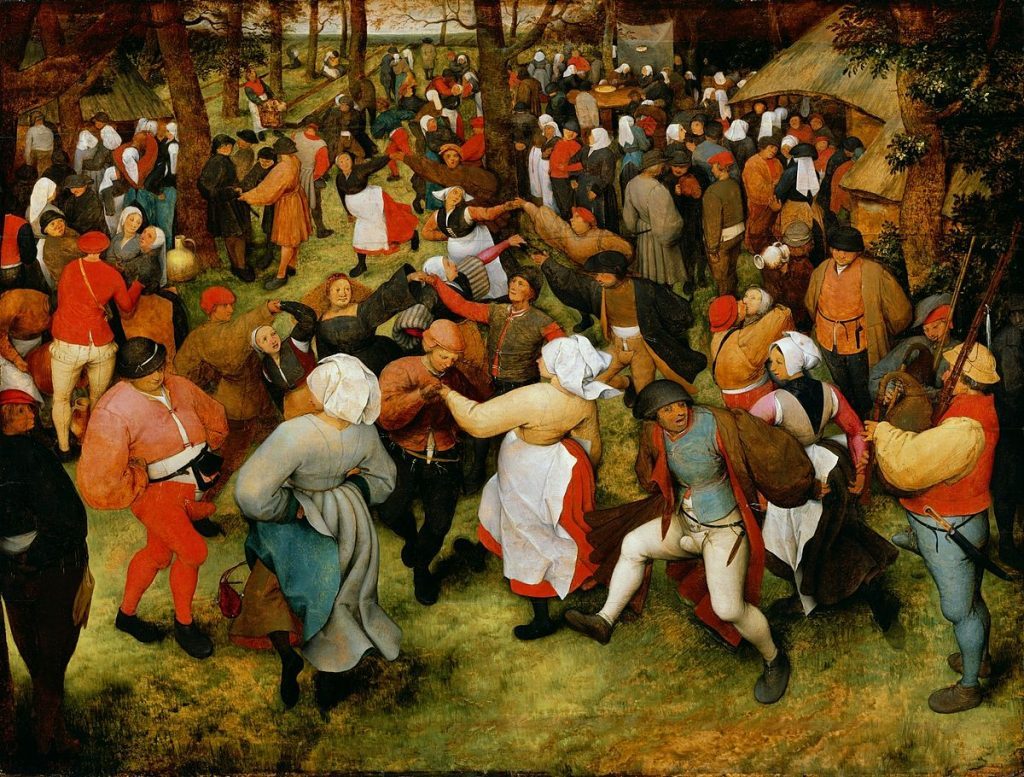How frequently do we hear passionate dancers claiming their own lives till they dance to their deaths?
Today is the 645th anniversary of the Dancing Plague, probably the least gross plague that has set upon humanity ever (Check out Zombie Plague).
On this day, in the year 1374, the town of Aachen in Germany was struck by an outbreak uncontrollable dancing. That craze for dancing spread across the rest of Europe infecting tens of thousands promoting it to the status of a ‘Plague’. The Dancing plague made innocent men and women uncontrollably dance to their deaths. The cause of it still remains unknown.
All of this might sound like Horse-shite and some obscure medieval folklore, but this plague was well documented and chronicled in religious notes at that time.
Dancing plague or dancing mania appears to have been contagious — if you were struck by the Dancing Plague, you could pass it on to others around you. The dancing urge could last for as long as several months – in which case it could easily prove fatal. It is unknown how spontaneous the outbreaks were, but we can be certain that the dancing was out of control and unconscious, and was accompanied by other extraordinary behaviours.
In an age, where people were under the strict domination of the Church, people were full-on Party Mode. They would strip naked, threaten those who didn’t join in, and even have sex in the streets. Others would hop around grunting like animals and many broke their ribs due to the aggressive jerkiness of their dancing, or collapsed on the ground foaming at the mouth until they were able to get up and resume.
In Strasbourg, one woman started dancing and many more soon caught the Dancing fever. Literally. It was as if the whole town couldn’t get David Bowie out of their heads.
In July of 1518, in full view of her neighbors, The woman named Frau Troffea began violently dancing in the streets of the city of Strasbourg, France in the full view of her neighbours. There was no music and her face had no expression of joy. She appeared unable to stop herself from her frenzy. Thankfully, it was not an isolated incident or else the city elders may have put it down to madness or demonic possession, but soon after Troffea began her dancing, a neighbor joined in. And then another. By the end of a week more than 30 people were dancing night and day on the streets of the city. And it didn’t stop there. By the time a month had passed, at least 400 citizens of Strasbourg were swept up in the phenomenon. Imagine it something like this (well more or less):
The Dance frenzy caused cases of Heart attacks, exhaustion and strokes among those affected. Medical and civic authorities were called in, expecting to find the seemingly inexplicable reason for this plague. Unable to find a cure, medics at that time believed that the cure for dancing was– more dancing. So they went on to erect wooden dias and stages, calling in musicians and performers to provide backing music until they ceased to dance. The idea was to gradually slow down the music, hoping that the dancers would calm down too.
But that didn’t work and in turn only made things worse.
Inclusion of music only encouraged more people to join the Dancing Party. In a span of 3 months around the end of September, at least 400 people died of dancing. Very little is remembered of the Dancing plague today as it sounds bizarre and unbelievable. Dozens of reliable chronicles from several towns and cities describe the events of 1374. And the course of the 1518 epidemic can be minutely detailed with the help of municipal orders, sermons, and vivid descriptions left behind by the brilliant Renaissance physician, Paracelsus.
What was the explanation behind this bizarre plague?
All attempted explanations to this plague has been unconvincing.
Initially thought of some heretic cult, it was only after some time that contemporary researchers treated it as some form of disease. All that have succumbed to this seemed to be dancing involuntarily. They writhed in pain, screamed for help, and begged for mercy. So what could have compelled them to dance against their will?
With the advent of modern science, and the age of simple biological explanations, it is said that epidemic madness’s of the past were caused by the ingestion of ergot fungi (found in rye), a mould containing psychotropic chemicals. Ergotamine is the main psychoactive product of ergot fungi, it is structurally related to the recre-ational drug lysergic acid diethylamide (LSD-25), and is the substance from which LSD-25 was originally synthesized. True, eating the infected rye could have lead to seizures, but the movements of Strasbourg’s afflicted looked much more like traditional dancing than seizures of any sort.
Just imagine this plague revisiting us today.








GIPHY App Key not set. Please check settings